In 2023, the Kierkegaard Library received the exciting addition of a physical display case! Since then, our student workers have taken turns creating exhibits to fill the space. See below for a list of our past exhibits, and be sure to stop by Steensland Hall to view our current display, “Translating Kierkegaard.”
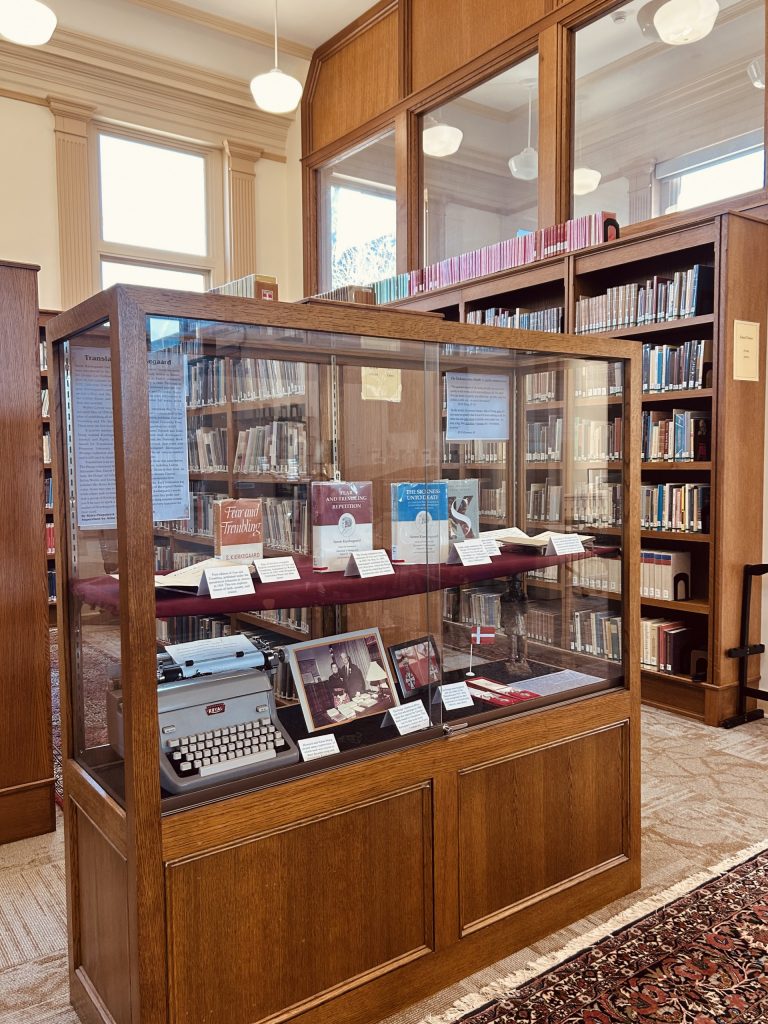
are first editions in Kierkegaard’s own hand of “Fear
and Trembling” and “The Sickness Unto Death,” as well as Lowrie, Hong, and Kirmmse translations. Also included are artifacts
from our archives.
“Translating Kierkegaard”—Spring and Summer 2025
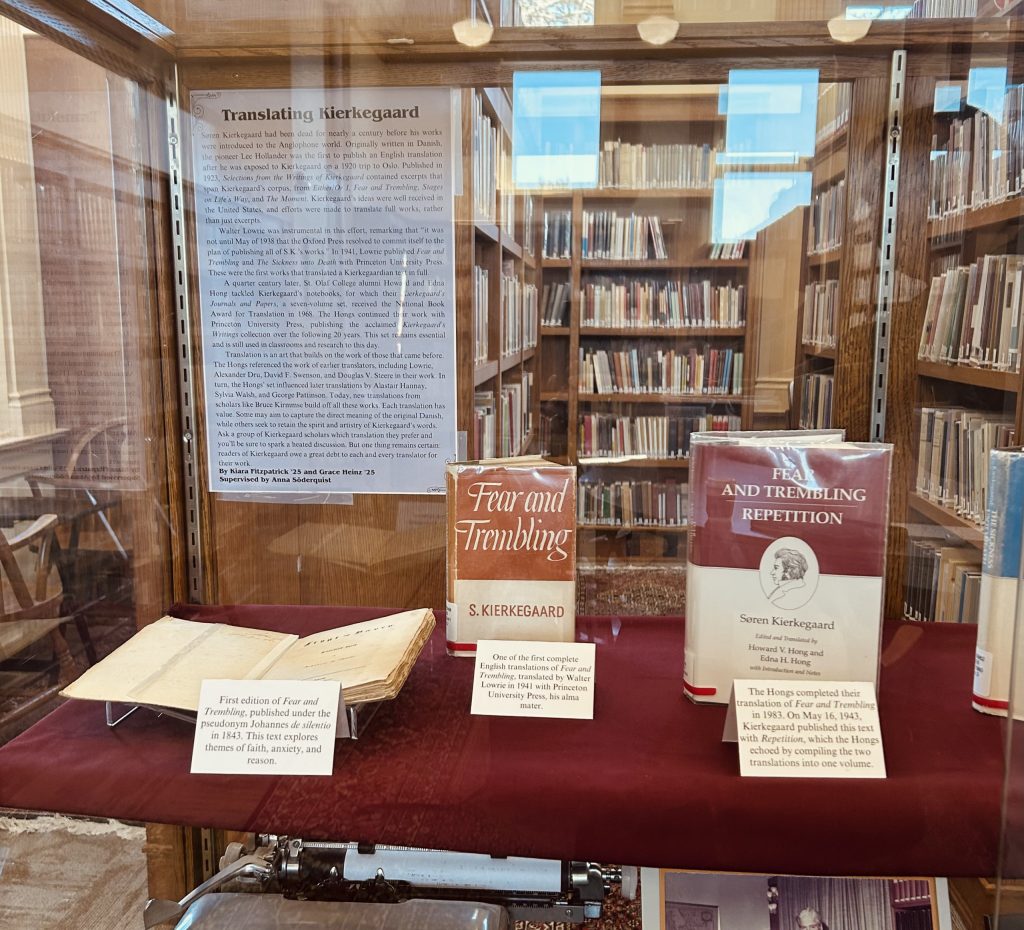
Translation is a key part of Kierkegaard scholarship, and our spring exhibit this year highlights the intricacies of this difficult work. Focusing on English translations found in the Kierkegaard Library’s collection, student workers Grace Heinz and Kiara Fitzpatrick compiled research and materials to explain the process in broad strokes.
Talking to K. Brian Söderquist, the Endowed Kierkegaard Chair in Christian Philosophy at St. Olaf, was especially helpful, as he is a key part of the team that published the acclaimed Kierkegaard’s Journals and Notebooks over the last two decades. His perspective offered insight into the difficulties of capturing Kierkegaard’s ironic humor in translation, remarking that Kierkegaard is a different person when you read him in his native Danish.
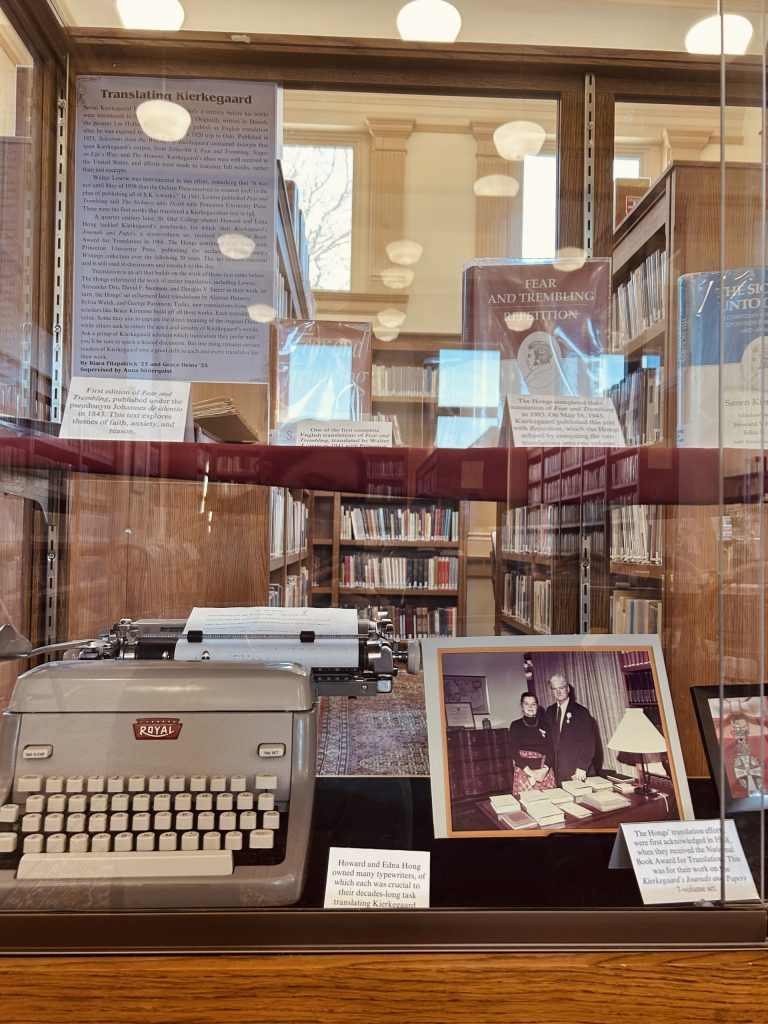
In this exhibit, we include a brief history of translating Kierkegaard into English, including the first translations of Fear and Trembling and The Sickness unto Death that we have in our collection, both by Walter Lowrie. To compare, we also include the most recent translations of these two texts, both by Bruce Kirmmse. We celebrate the Hong’s incredible work on the Kierkegaard’s Journals and Papers collection, for which they received the National Book Award for Translation in 1968 (see left). This exhibit will be up during the Kierkegaard Summer Institute in 2025, and we invite you to stop by and view these unique materials in person.
“Introducing Kierkegaard”—Fall 2024
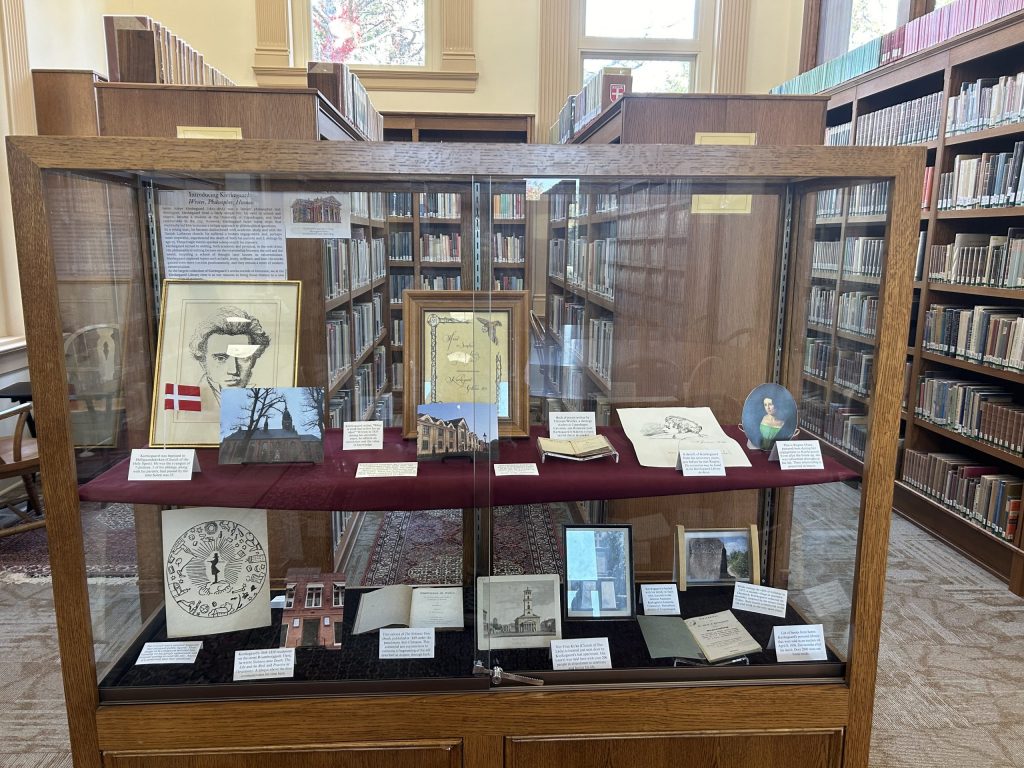
To kick off the 2024–2025 school year, Kiara Fitzpatrick and Ella Nielsen worked together to introduce Kierkegaard to a new generation of St. Olaf students. A Danish philosopher and theologian, Kierkegaard lived a fairly simple life: he went to school and church, became a student at the University of Copenhagen, and lived comfortably in the city. However, Kierkegaard faced many trials that eventually led him to pursue a rather unique approach to philosophical questions. As a young man, he became disillusioned with academic study and with the Danish Lutheran church. He suffered a broken engagement, and, perhaps most impactful, he experienced the death of both his parents and 5 siblings by age 25. Kierkegaard turned to writing, both academic and personal in the form of journals, in the mid-1830s. His philosophical writing focuses on the relationship between the self and the world, inspiring the school of thought later known as existentialism. In these founding moments, Kierkegaard explored topics such as faith, irony, selfhood, and love. His works gained even more traction posthumously, and his treatises have long been discussed, debated, and dissected. As the largest collection of Kierkegaard’s works outside of Denmark, we at the Kierkegaard Library view it as our mission to bring these themes to a new generation of students.
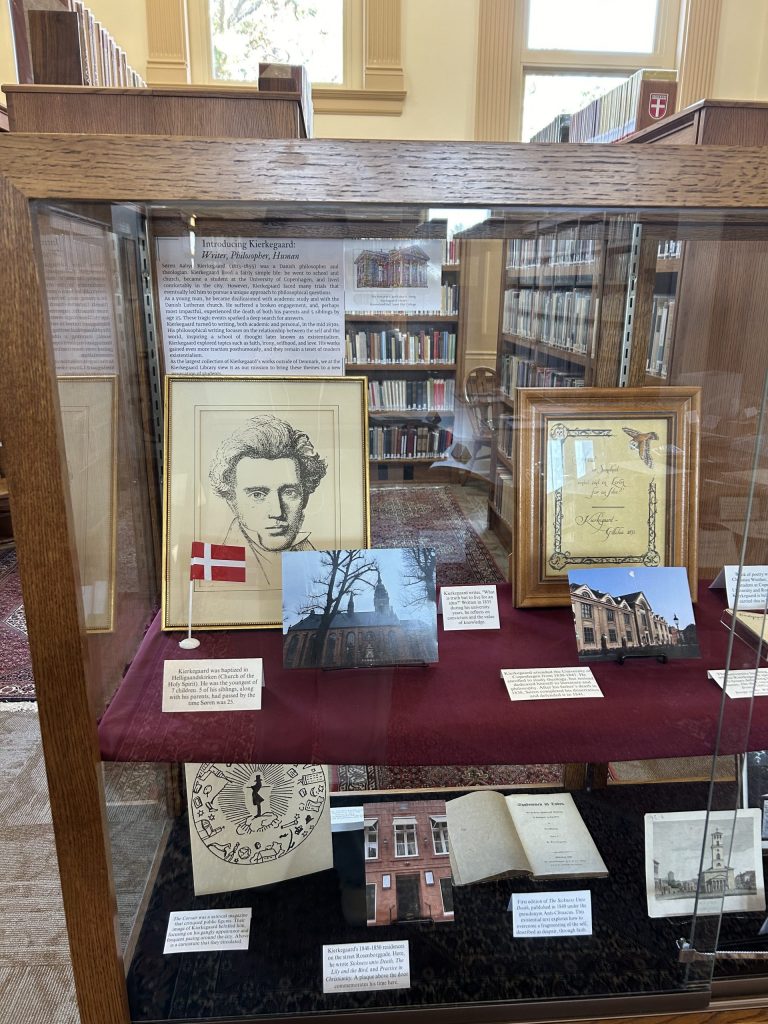
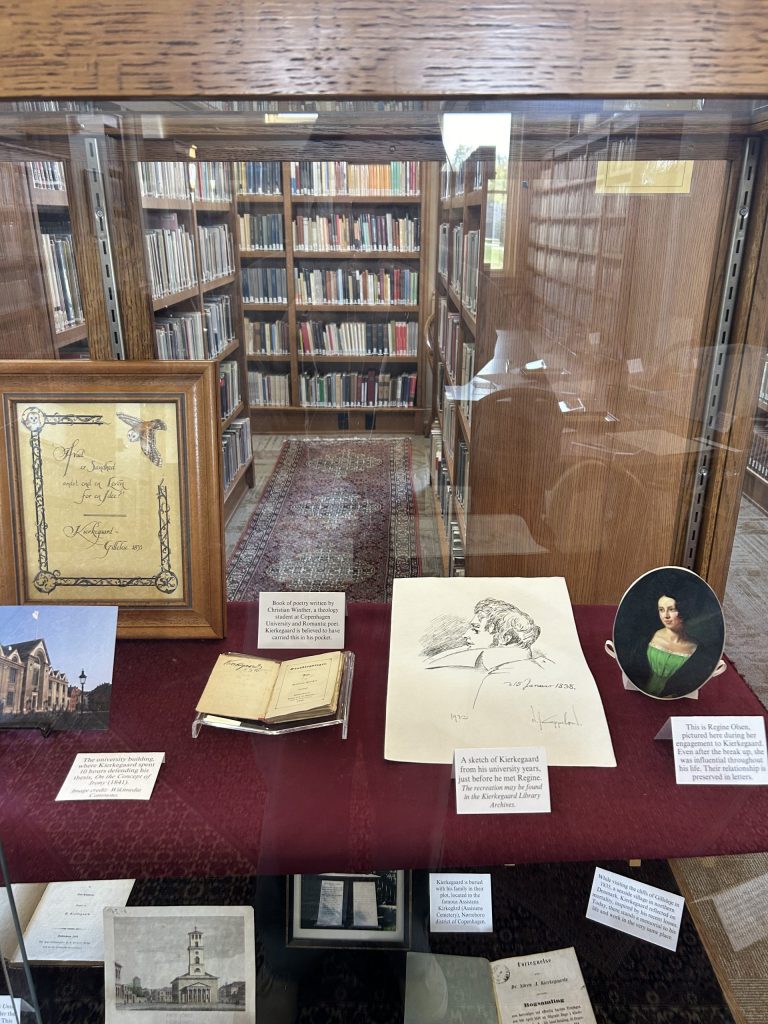
In this exhibit, we offer a brief history of Kierkegaard’s personal and academic life, supplemented by photographs of Kierkegaard’s baptismal church, several of his apartments, and the church where his funeral was held. We compile drawings from the Kierkegaard Library’s Archives, first editions of Kierkegaard’s Fear and Trembling and The Sickness Unto Death, and images of various memorials dedicated to Kierkegaard around Denmark. Please view the images above for a glimpse into the exhibit.
“The Origins of the Hong Kierkegaard Library”—Summer 2024

The origins of the Hong Kierkegaard Library collection can be traced back to the mid 20th century when Howard and Edna Hong developed a passionate interest in the works of Søren Kierkegaard while in Europe. Prior to and after Howard’s retirement from St. Olaf College in 1978, the Hongs devoted themselves to the task of providing a new English translation of Kierkegaard’s writings. In order to understand and translate Kierkegaard, it was essential to become richly acquainted with the works which informed Kierkegaard’s thought. In the course of their translation efforts, the Hongs collected an enormous body of literature which includes writings from Kierkegaard’s contemporaries and the thinkers who influenced him, as well as interpretive studies about Kierkegaard. Their private collection was donated to St. Olaf College in 1976 as the foundation of the present Hong Kierkegaard Library.
The provenance of some of the most treasured items in our collection lead back to Søren Kierkegaard himself: items which belonged to Kierkegaard or were inscribed by him as gifts for others. Student workers Ella Nielsen, Grace Heinz, and Kiara Fitzpatrick collaborated to showcase some of the Library’s rare Kierkegaard artifacts and contextualize them within his life. We begin with his baptism in Copenhagen’s Church of the Holy Spirit and move through his life, ending with photographs of various memorials throughout Denmark. Incredibly rare items are featured in this display, including an 1849 first edition of the famously insightful (and difficult) The Sickness Unto Death, and a poetry book that Kierkegaard carried around in his breast pocket (see below).
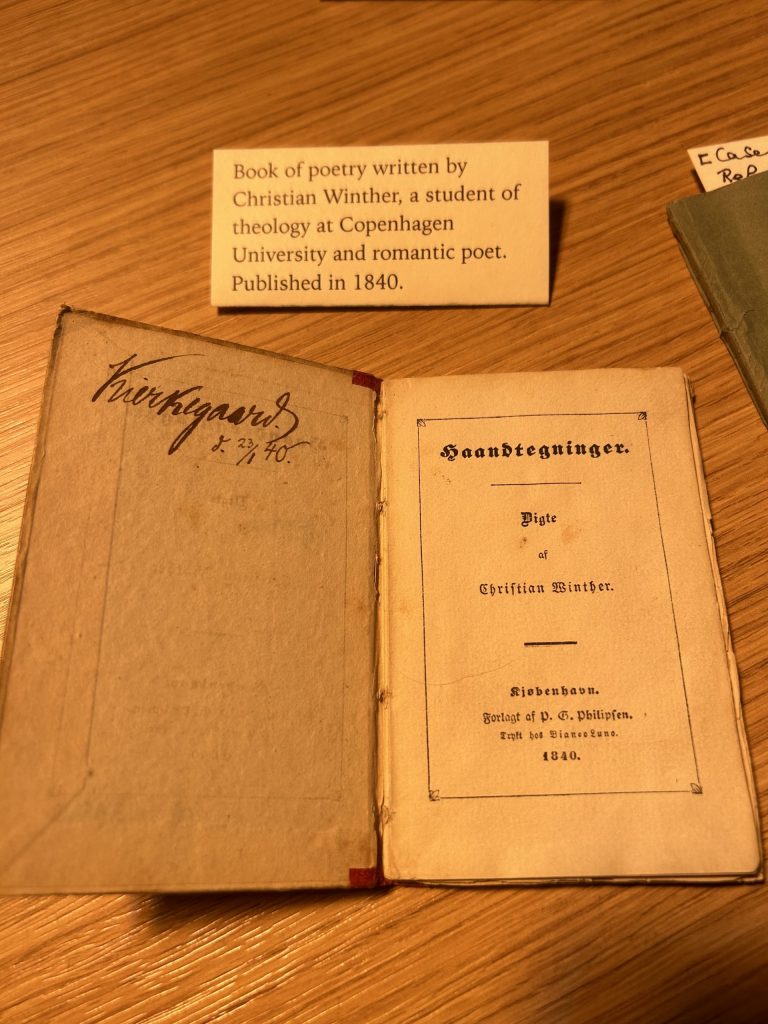
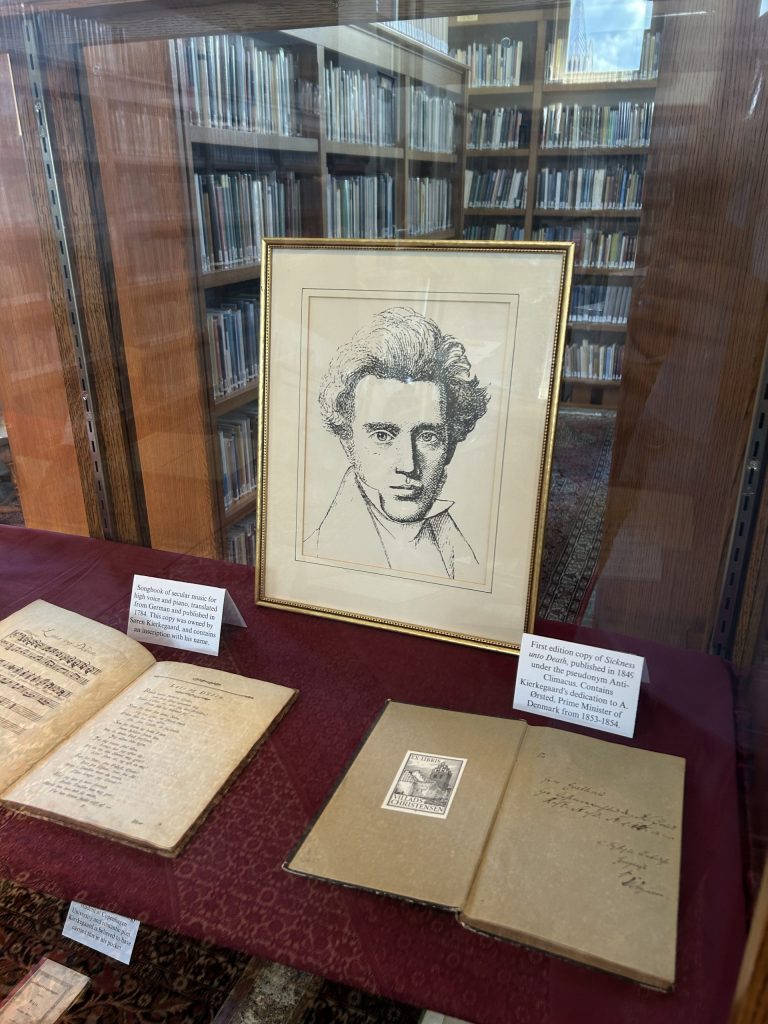
“Kierkegaard on Love”—Spring 2024
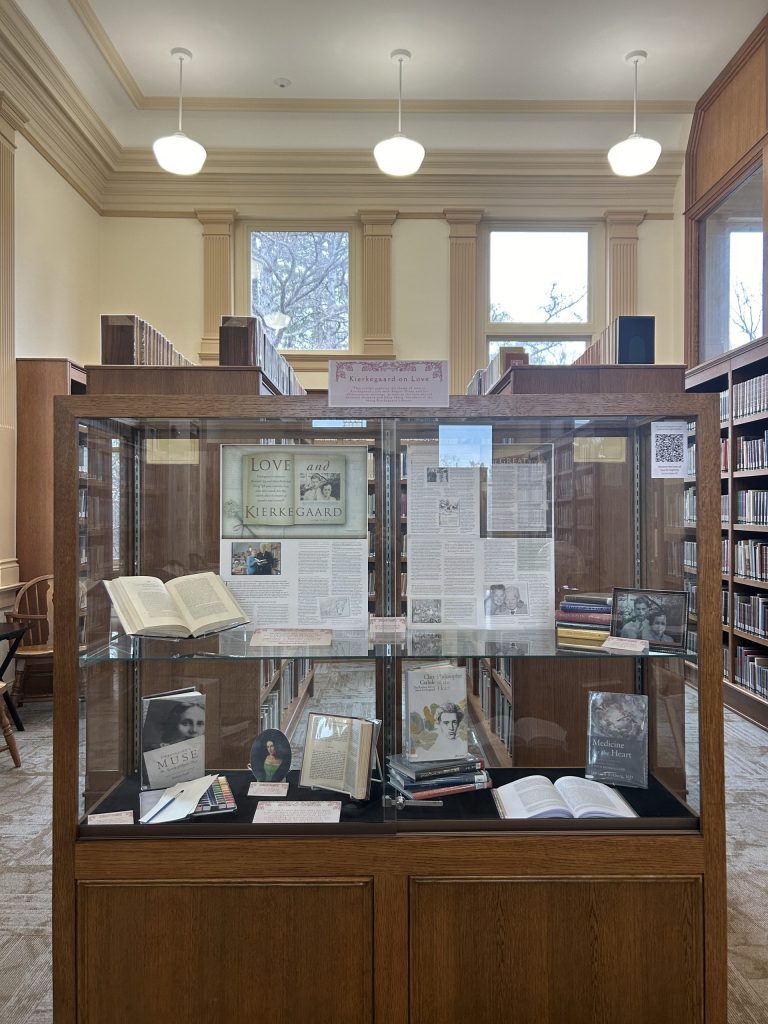
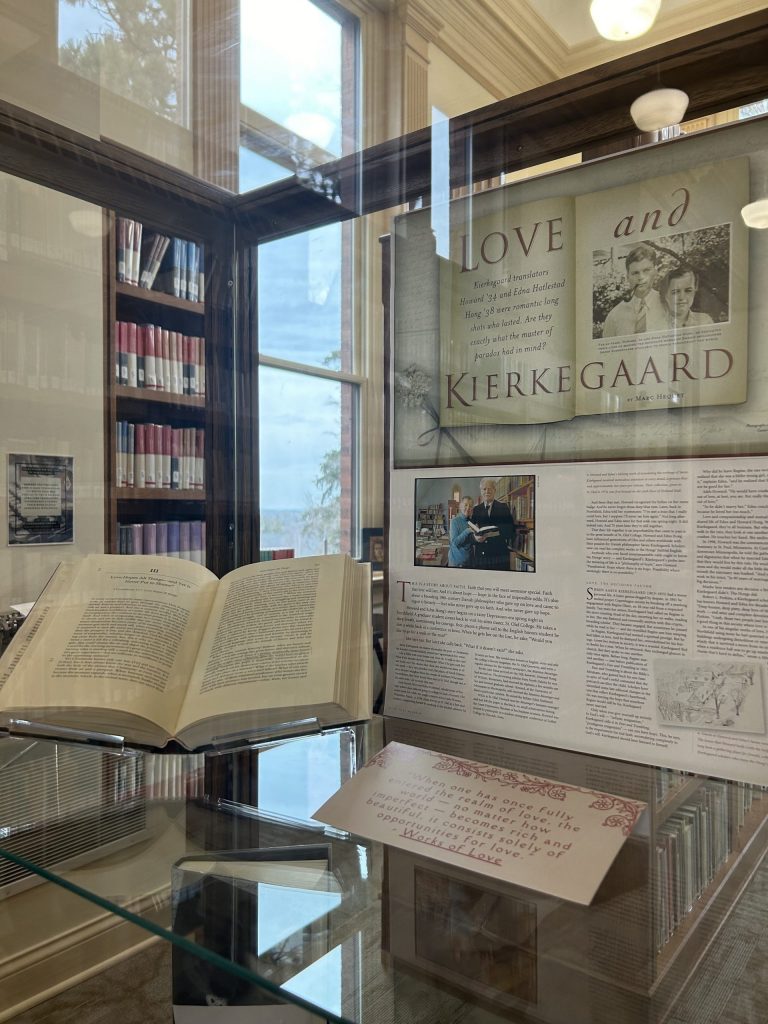
Kierkegaard is often regarded as quite a pessimistic thinker, a reputation which is understandable given his philosophical focus on existential anxiety, faith, and the intrinsically painful process of self-discovery. So, for our first exhibit in the Library, Else Madsen and Ivy Lanz wanted to switch directions by sharing some of Kierkegaard’s thought on love.
From Kierkegaard’s time, they chose select quotes from Works of Love and touch on his lifelong love for Regine Olsen, his one-time fiancée. Else and Ivy tell the love story of Howard and Edna Hong, who met as undergraduates at St. Olaf College and fell in love, working together in post World War II Germany to help displaced persons, and eventually spending time in Denmark where they first came into contact with Kierkegaard.
The rest of their lives were filled with a mutual love of Kierkegaard and the desire to bring his entire corpus into English. Using materials from the Kierkegaard Library Archives, we highlight how the Hongs’ love and care for each other translated (literally) into their joint work with Kierkegaard and the founding of the Kierkegaard Library. Please view the images below for a glimpse into the exhibit.